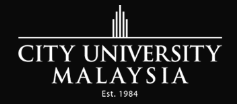Studying in the United States
More than 6,000 Malaysians are currently pursuing degree programmes in the United States. Their decision to leave family and friends to study in the US has been worthwhile. What attracts Malaysian Students to the US?
The United States is home to over 4,860 regionally accredited universities and colleges offering over 1,000 majors. US colleges are known worldwide for the quality of their facilities, resources, and faculty. Accreditation systems ensure that institutions continue to maintain these standards. A US degree offers excellent value for the money. A wide range of tuition fees and living costs, plus some financial help from colleges, have made study in the US affordable for thousands of students before you.
Students in the US enjoy flexibility in the choice of courses within a college or university, but more importantly there is also the option for students to move between one institution and another. It is quite common for a student to complete the first two years of a degree at one institution, usually a community college, and then move on to another school as his or her academic interests come into focus and mature.
Over 720,000 international students studied in the US in 2010/2011. American colleges and universities welcome students from all corners of the globe as foreign students are seen as providers of diversity and international representation.
The United States offers many opportunities for education and personal growth. It is renowned for its excellent institutions of higher learning, research facilities, and is recognised as a leader in many fields, including technology, sciences, engineering, business and the arts.
Colleges and universities in the US are tertiary level institutions. Both colleges and universities offer extensive libraries, research facilities and learning opportunities. Technology and polytechnic institutes offer programmes primarily in science and engineering at both the undergraduate and graduate levels.
Length of Programme
Malaysian students who have five credits with passes in their SPM results can enter many US colleges/universities. Students with college/university experience (including those holding a three year diploma or completion of a two year American degree transfer programme) may apply for admission as transfer students. The number of credits offered will depend on the work completed and is always at the discretion of each college/university. In general, a master's degree takes one to two years to complete, depending on the field of study, while a doctoral degree requires three to five years of study beyond the master's level.
Accreditation
American institutions of higher education are accredited by one of six regional accrediting bodies, depending upon the location of the institutions. These agencies set educational standards for colleges and universities and contribute to the enhancement of operations by requiring compliance with specific standards developed by qualified educators and professionals. It is important to attend a school that is accredited as your own country may not recognise your degree, and you may not be able to transfer your credits to another college or university that has accreditation. Attending an accredited institution of higher education is often viewed favorably by employers, and is always necessary if you plan to transfer academic credits to another institution or attend graduate school.
Field of Study
Students can choose from more that 1,000 majors currently being offered at colleges/ universities in the US. One of the most important benefits is the flexibility of the US system should you decide to change your field of study, which can be done without having to restart your entire programme. You may, however, need to take additional course work, depending on the requirements of your new area of specialisation. Fields of study popular with Malaysian students are well represented at US schools in many fields of study. Some of the most common ones include business, engineering, sciences, computer science, actuarial science and mass communication.
The Academic Year
The academic year at US colleges and universities typically begins in late August or early September and ends in mid to late May. Summer session courses are optional and credits gained during these sessions count towards your degree. Schools on a semester system go for two 15-week terms, followed by a summer session. Those using a quarter system instruct over three ten to eleven week sessions. Regardless of the system in use, all students enrolled full-time spend the same amount of time each year working towards their degrees. It is also usually possible to be admitted to a US school for the second semester, or the second or third quarter (typically called spring enrolment).
Grading System
In addition to periodic feedback throughout the academic term, students receive cumulative grade reports at the end of each semester or quarter. Grades are assessed on the basis of all work done, not just on a final examination. Work graded may include any or all of the following: weekly or occasional tests, mid-term examinations, final examinations, research papers or projects, presentations, homework assignments and class participation. No credit is given for a failing grade.
Educational Opportunities and Options
Students at US colleges/universities are able to enrol in a variety of different programmes. Some of the opportunities available to international students include work opportunities or internships with US businesses and organisations, taking classes at partner universities, being involved in extra-curricular activities such as swim team, debate team, or the international student club. Extracurricular activities are virtually unlimited, allowing students to explore their interests to the fullest.
Entry Requirements for International Students
Each institution sets its own standards for admission; however, all international students are required to sit for the TOEFL (Test of English as a Foreign Language) Exam. It is important to visit the EducationUSA Advising Center at MACEE, the Malaysian-American Commission on Educational Exchange in order to understand the application process and the individual requirements for each institution.
What It Costs' Remember to Check Scholarships !
The cost of higher education varies greatly from one institution to another. Total costs include tuition, housing, transportation, food, books, supplies, health insurance and personal spending. Higher prices are associated with private institutions, but these private schools often offer scholarships. Colleges and universities located in major cities and on the East and West coasts of the US tend to be expensive due to living costs in these areas. Undergraduate programmes may be less expensive by completing the first two years in a Community College and then transferring to complete the final two years in a 4-year college or university. A student should plan on a total average comprehensive cost of US $15,000 to $50,000 per year. Students should check MACEE's Twitter and university websites for scholarship information.
Immigration Procedures for International Students
All international students are required to possess a student visa. Once a student is accepted by a US university and confirm their intention to accept the admission, the US university will issue a document (I-20) to the student to obtain a student visa. Visa applications and advisement are available from the US Embassy's website: http://www.ustraveldocs.com/my/. MACEE's Educational Advisers can assist you with your questions or you can email the US Embassy: KLConsular@ state.gov with your visa questions.
Adjusting to College Life in the United States
MACEE offers Pre-Departure Orientations (PDOs) for students who have successfully completed the application process. These sessions help prepare students to cope with pre-departure tasks, arrival at their university, culture shock, and post-arrival needs. MACEE currently offers several PDOs each year that students can attend - please check the MACEE website for information on programmes.
About MACEE
MACEE's EducationUSA Advising Center offers free advising services and has a resource library with undergraduate and graduate college / university catalogues, CDs, applications and resource materials on applying to colleges and universities. TOEFL, GMAT, and GRE, SAT I and SAT II information and booklets are also available for students to browse freely. Please contact us for more information on any of MACEE's services, including the Fulbright programme, educational advising or testing.
Contact Details
MACEE
18th Floor Menara Yayasan Tun Razak
200 Jalan Bukit Bintang, 55100 Kuala Lumpur, Malaysia
Tel : 603-2166 8878
Fax : 603-2166 1878
Advising email : [email protected]
Fulbright email : [email protected]
Testing email : [email protected]
Website : www.macee.org.my
Office hours : Monday - Friday, 9:00 am - 4:30 pm
Back to Studying in United States Back to Overseas Education Main Page























